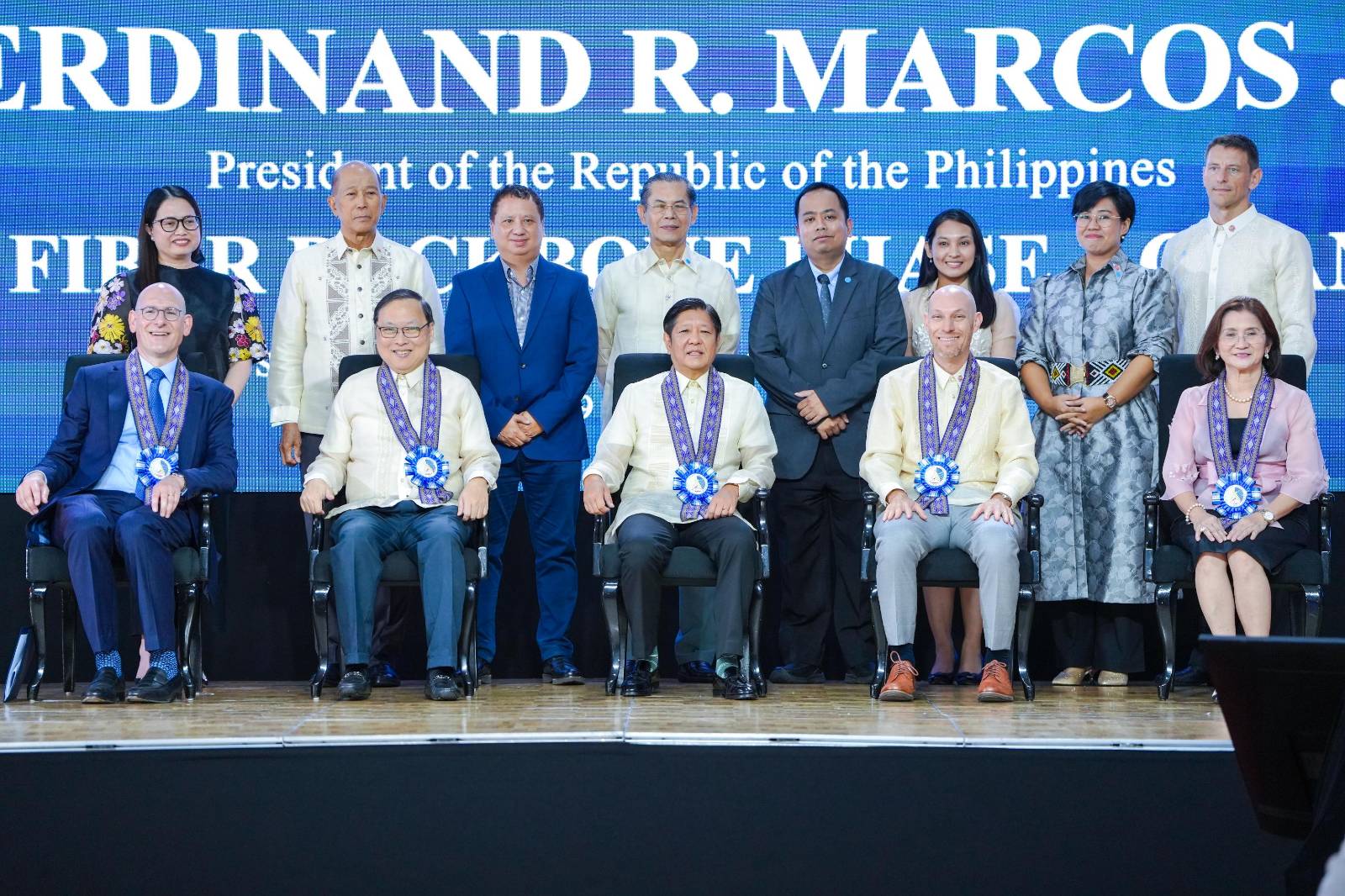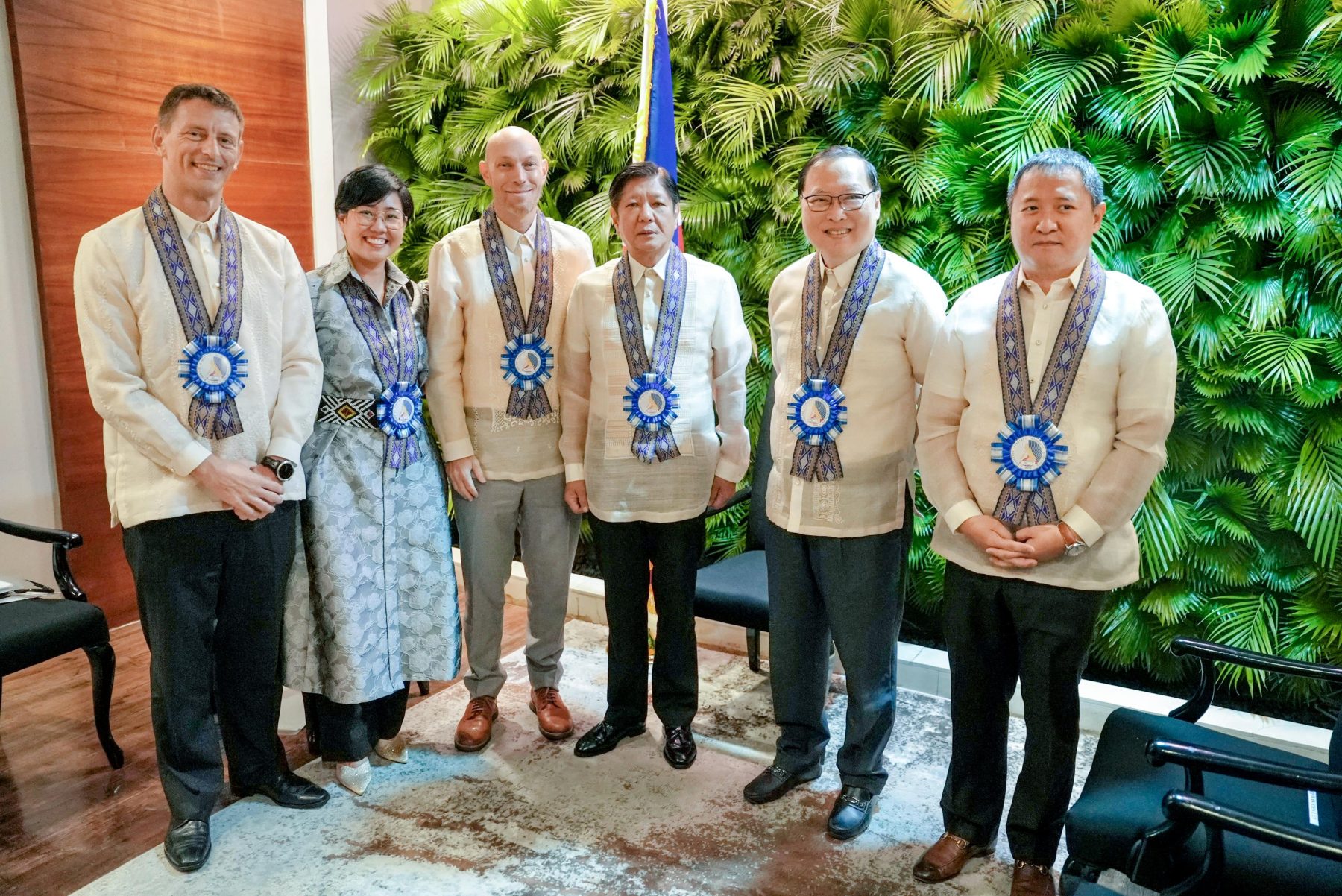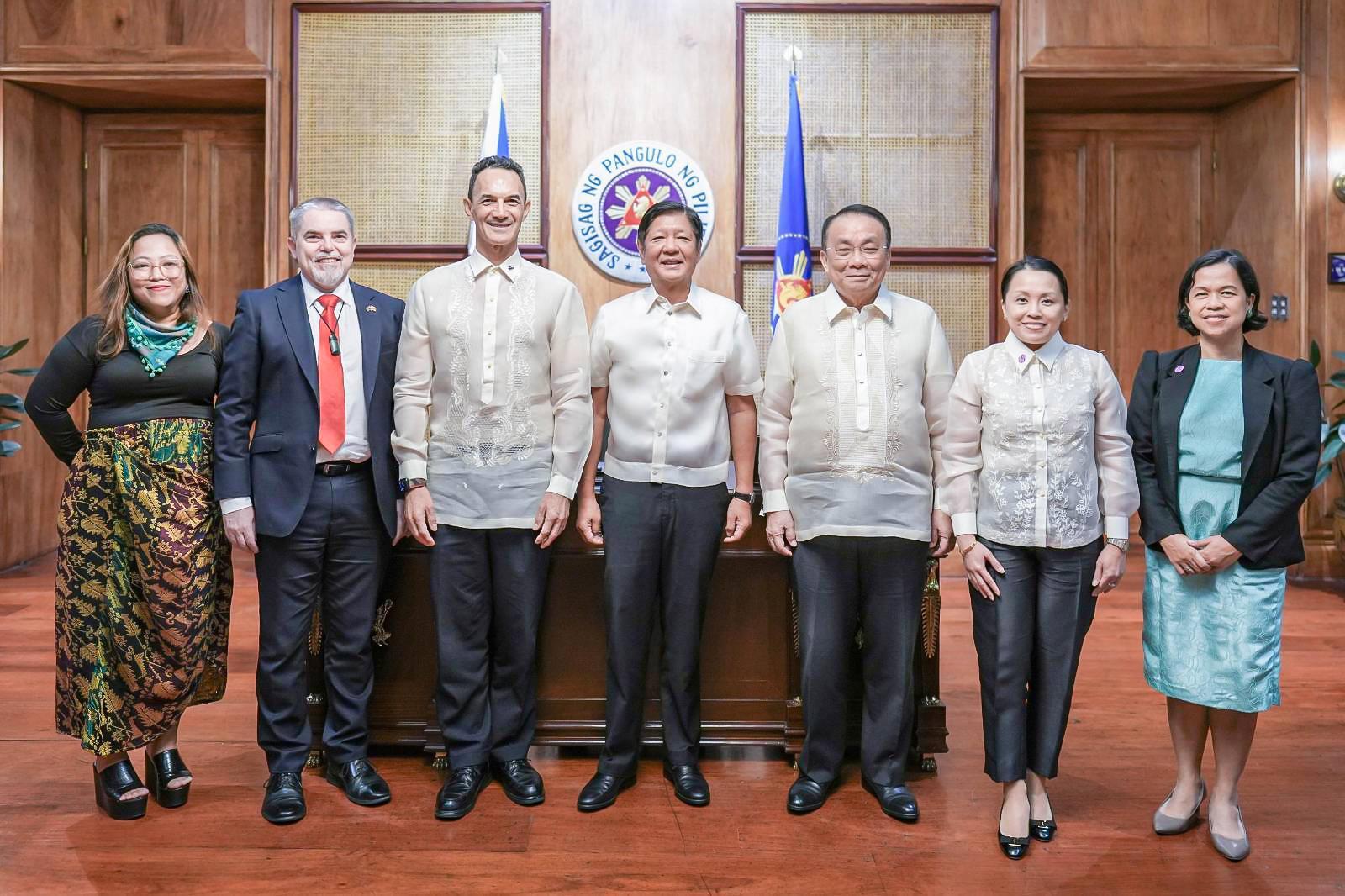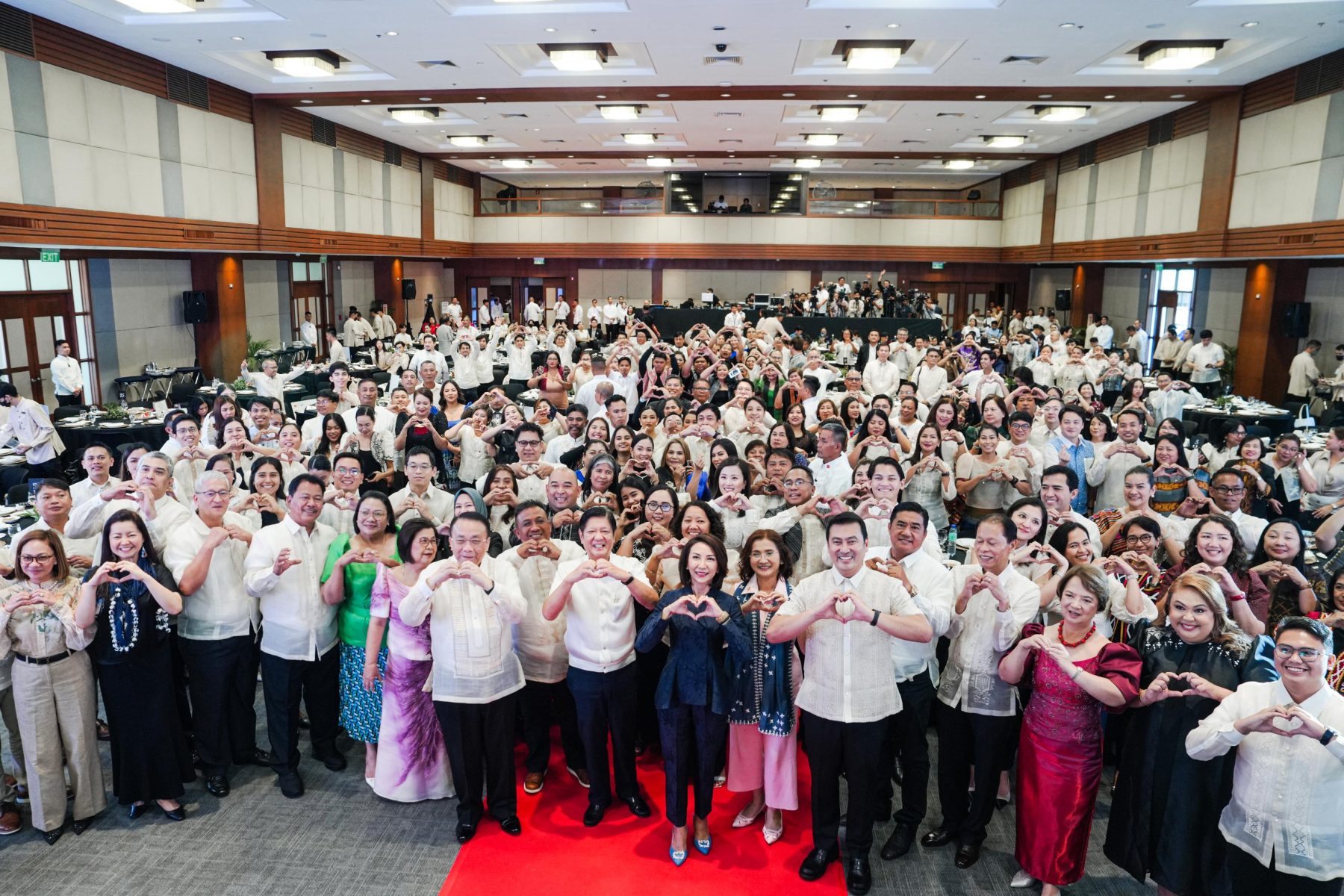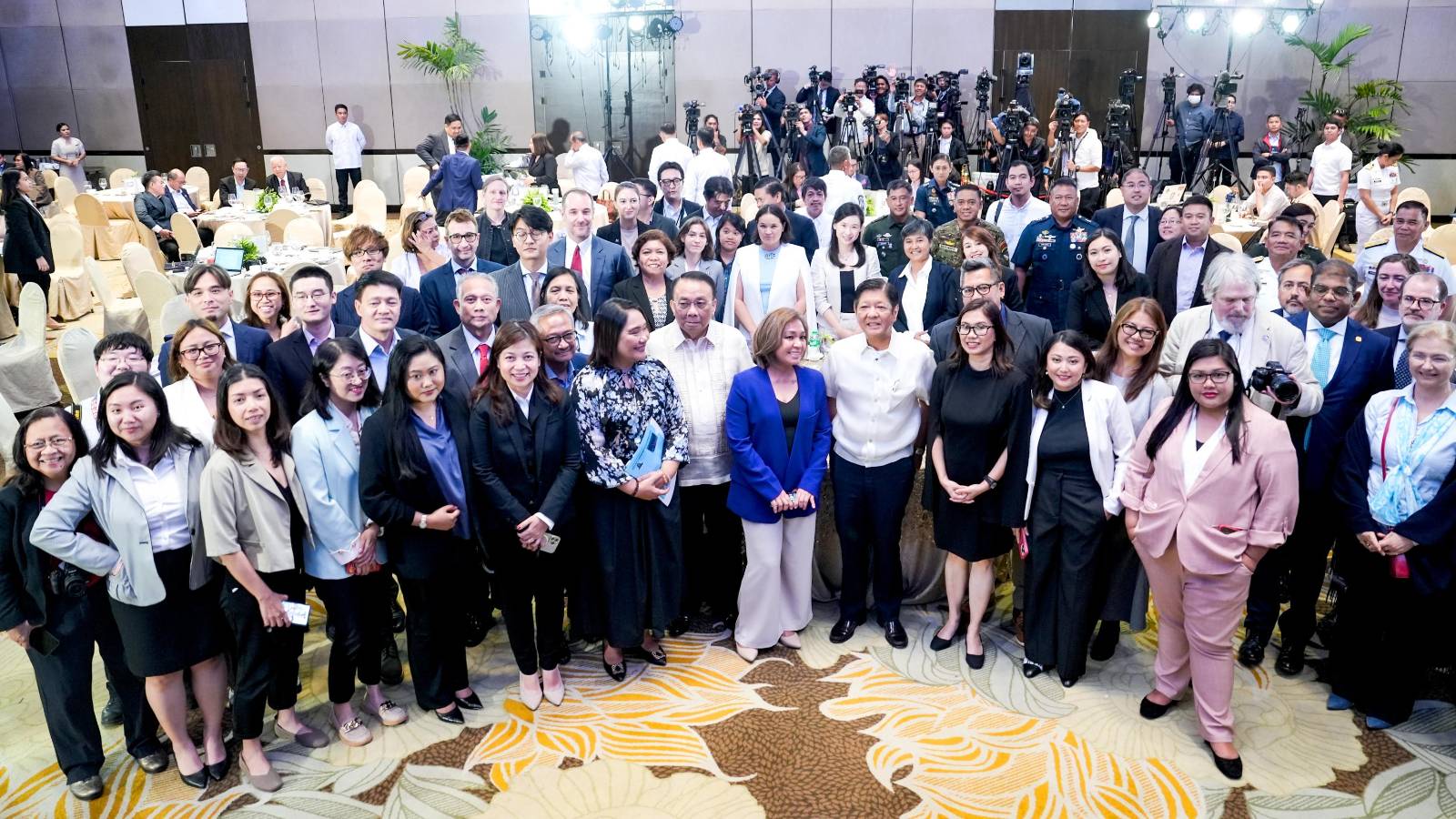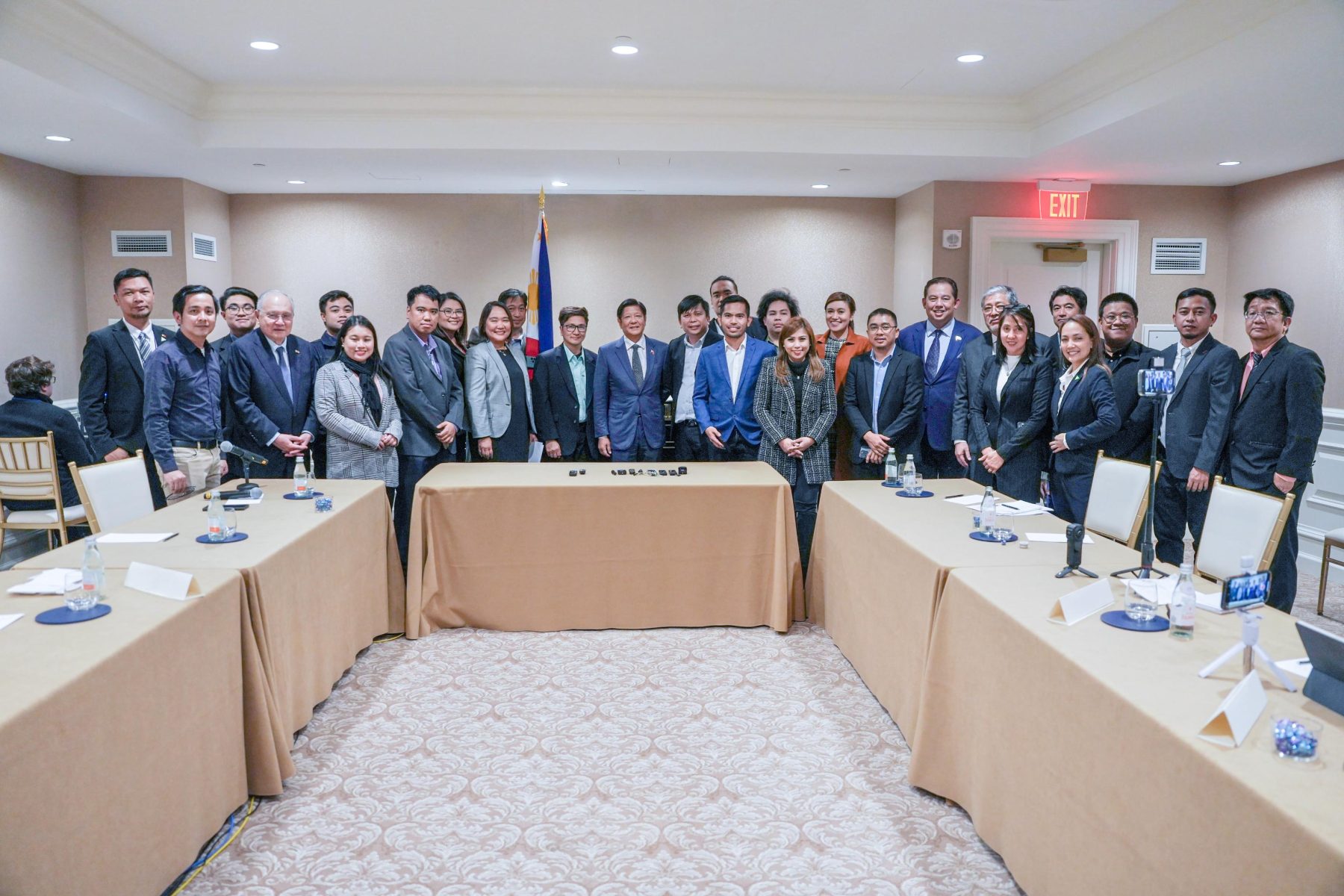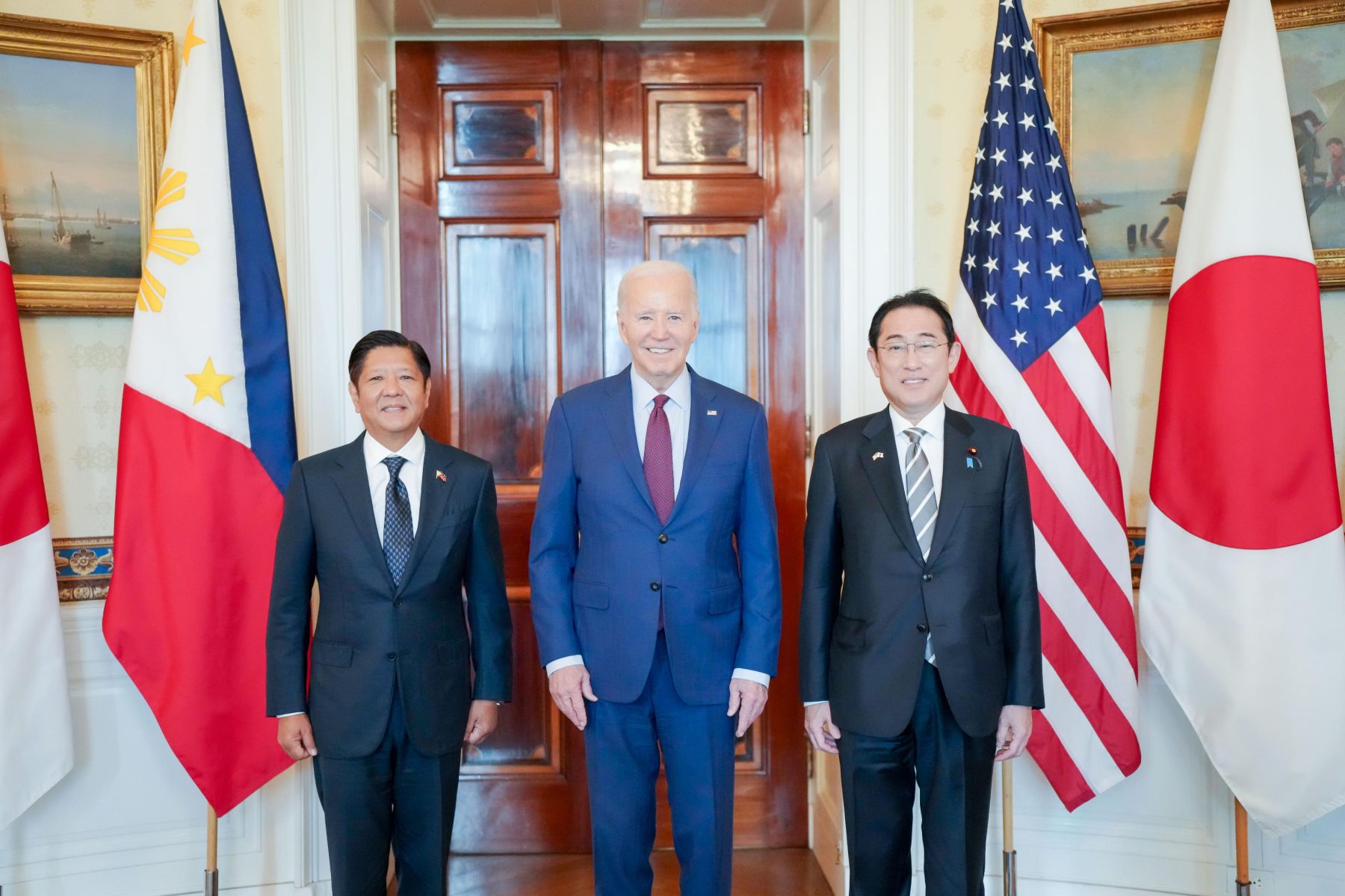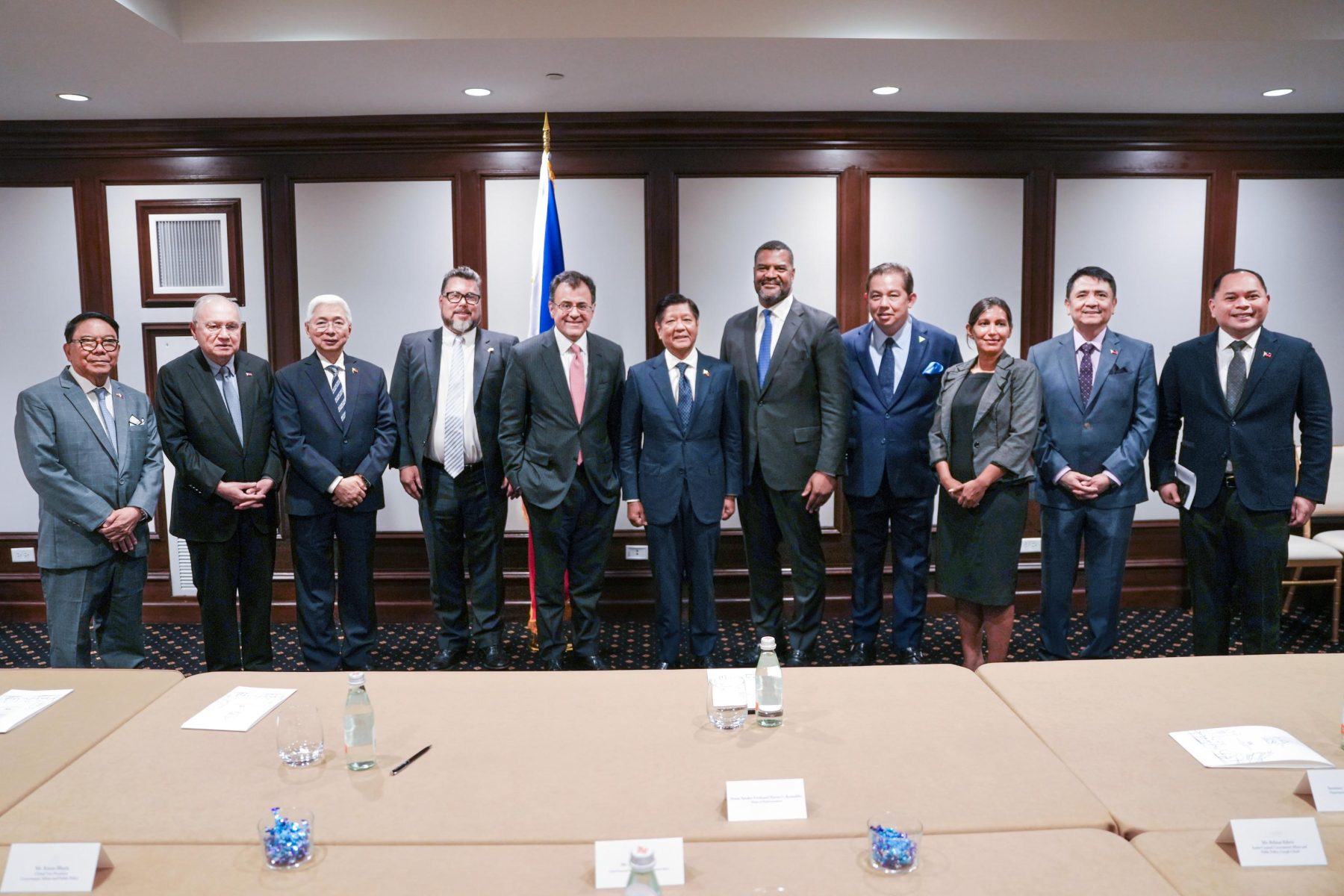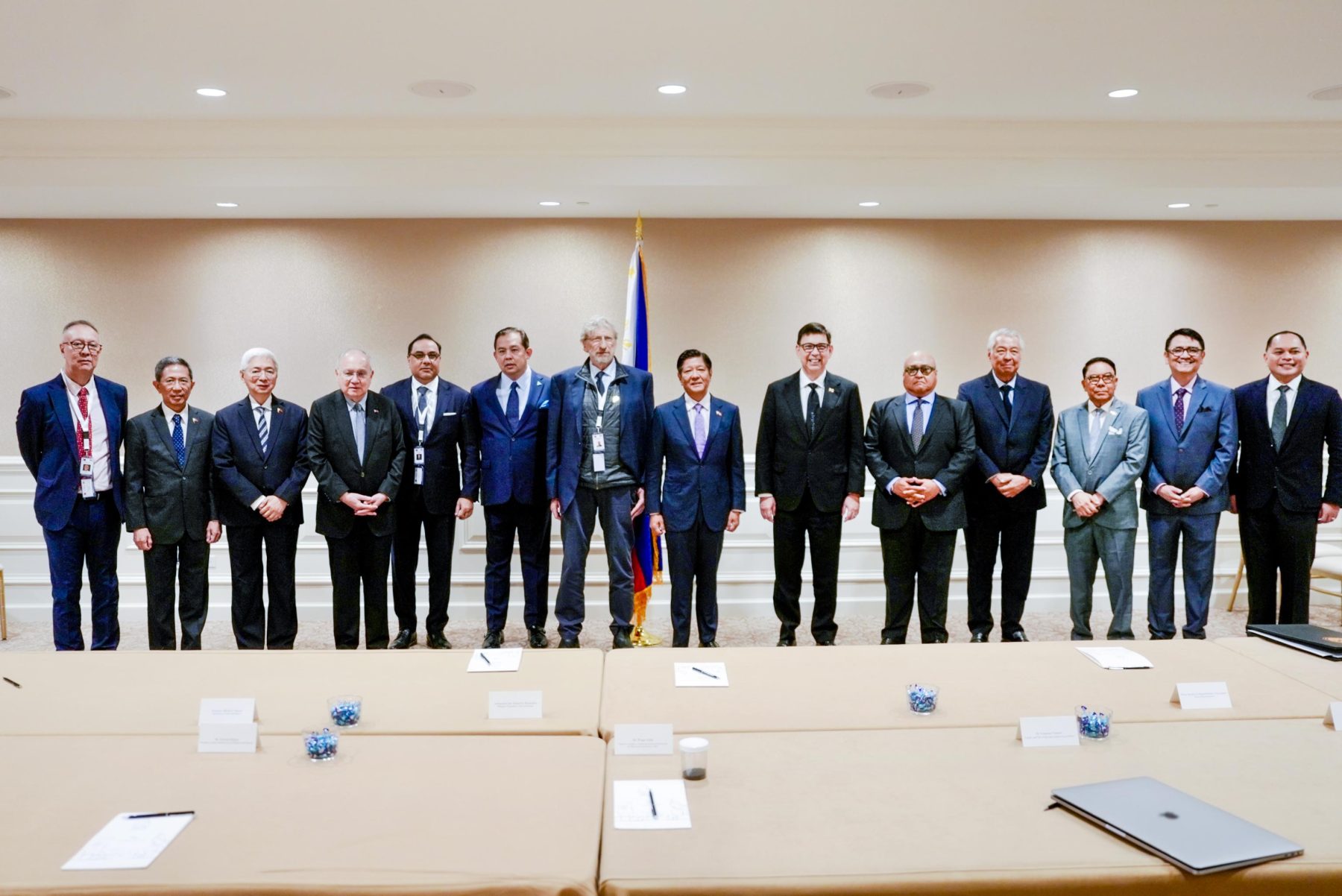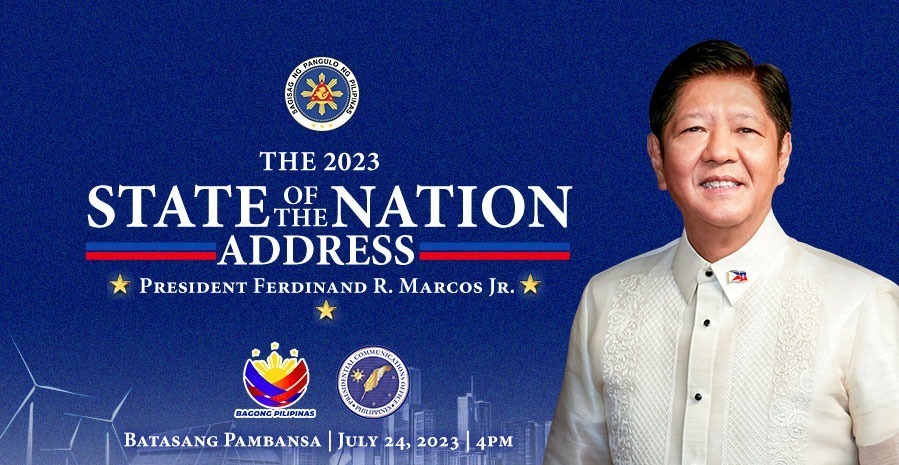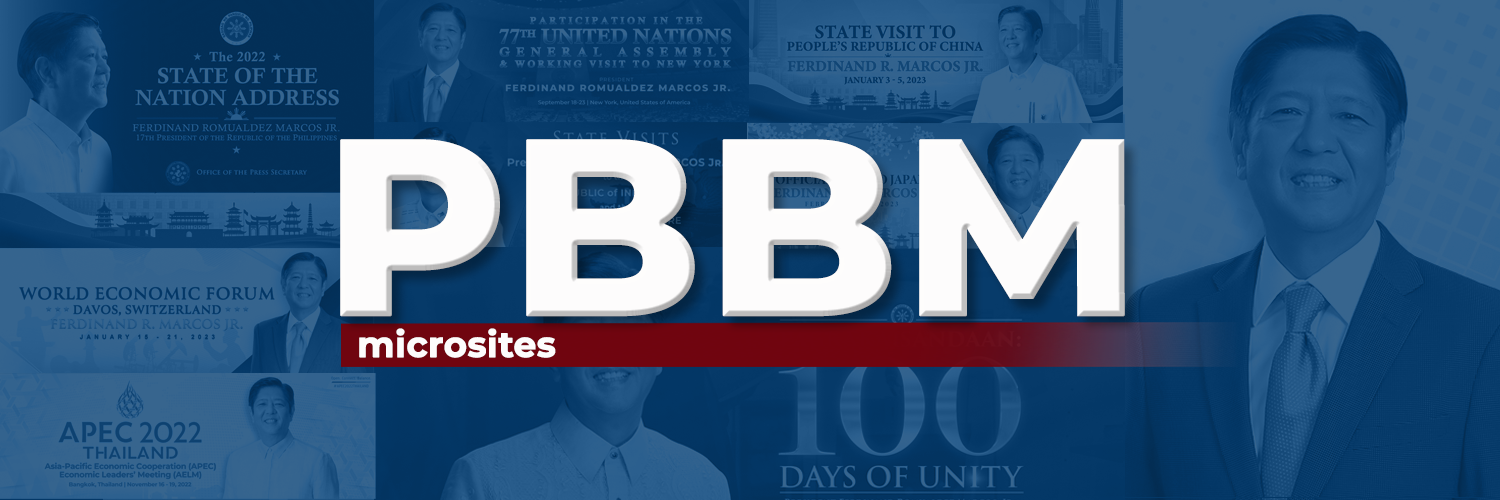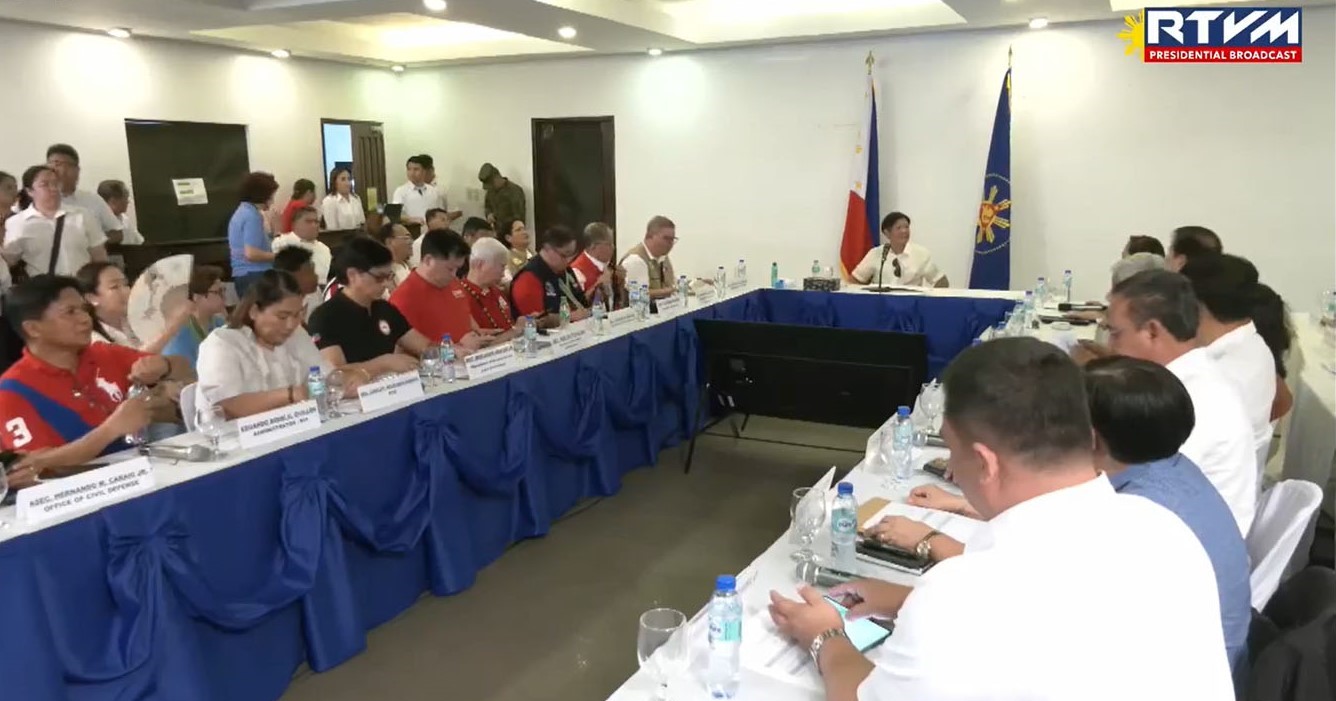June 12, 2015 – News Releases
 |
| 12 June 2015 |
APEC NEWS RELEASES
|
|
|
| International Monetary Fund sees moderate global growth this year |
| (BAGAC, Bataan) An International Monetary Fund (IMF) executive on Thursday projected global growth to remain moderate, with uneven prospects across many countries and regions, although he noted a changing trend of recovery for advanced economies.
The IMF forecasts global growth at 3.5 percent this year, and 3.8 percent next year, the Fund’s head for Asia and the Pacific, Odd Per Brekk, said. Brekk however noted that the IMF sees the outlook for advanced economies as improving, while that for emerging market and developing countries as slowing down. “This reflects bigger prospects for some large emerging markets, including oil-exporting emerging market countries. And that said, emerging markets, and especially in the Asian region, remain the global growth leaders,” he said. Brekk considered lower oil prices as a positive factor but indicated that there are risks related to financial sector development, especially with the diverging policies of the world’s major central banks, specifically the US Federal Reserve, the European Central Bank, and the Bank of Japan. He cautioned that these diverging policies could lead to disruptions in financial markets that could in turn spill over to other countries. In terms of policy requirements for this kind of environment in advanced economies, Brekk said raising actual and potential growth continues to be the highest priority, combined with demand and structural reforms. Emerging markets and developing countries also have an important structural reform agenda to raise potential output, he said, adding that in general, they have limited policy space to support demand. He noted that Asia’s economic outlook remains favorable, and the region is projected to continue to be a global growth leader. “We’re expecting growth in Asia and the Pacific to be 5.5 percent roughly, 5.5 percent this year and next year, and with domestic demand being the main driver. Although there is again considerable variance across countries in this region,” he said. “So, what we’ve been discussing here today and we continue to discuss tomorrow is… what policies can help secure growth in the short run and in the long run?” For the Asia-Pacific Economic Cooperation (APEC) region, the main priority would be to bolster actual and potential growth; and to strengthen the resilience and build policy space, he said. With this in mind, the IMF thinks monetary policies could be flexible across countries, he said, adding that it needs to respond flexibly because the situation is uncertain. Other thrusts should include allowing interest rates to become flexible, he said, calling on countries to focus on strong micro and macro prudential supervision and regulation, fiscal policy and structural reforms. Brekk said the APEC meetings are discussing the four policy areas contained in the Cebu Action Plan. PND (as) |
|
|
| Government Finance Bureau wants Congress to pass law allowing increase in property tax collection |
| (BAGAC, Bataan) The Bureau of Local Government Finance (BLGF), which is under the Department of Finance, wants Congress to work on a law that would allow local governments to collect more real property taxes to be used for community development.
In a press conference on Wednesday, BLGF head, Jose Arnold Tan, said local officials are not collecting the appropriate real property tax because they have failed to adjust the schedule to market values, which updates the property taxes to be collected in their localities. The local government code requires the schedule of market values to be updated every three years, Tan said, noting that some provinces are lagging by as much as 20 years. The issue, he said, is that whenever the BLGF encourages the local governments through advocacy, training courses, and workshops to make the adjustment, they complain that raising taxes would affect their political careers. Some local executives and even Sangguniang Bayan members have however expressed their willingness to forego their authority to approve the schedule of market values, he said. “They are one with the Department of Finance in amending the local government code that the approval of schedule of market value will now be with the secretary of finance,” Tan said. Once this is approved, local governments will be left with the enactment of an ordinance imposing the tax rate, he explained. “We depoliticize the schedule of market value; to have a one value for the schedule of market value and the zonal value. We call it the Valuation Reform Act — strengthening the BLGF to get this additional function of reviewing the schedule of market value being prepared by the local assessor,” he said. Once it is prepared, it will be reviewed by the BLGF and approved by the secretary of finance. This initiative will be done in coordination with the Bureau of Internal Revenue. Tan said the proposal has passed the House of Representatives and is now with the Senate. “I don’t know if it will be passed this June but probably in the resumption in July. We need 14 votes but we only got 12. Most probably, we have to lobby again,” he said. Provinces are losing as much as P9.4 billion as a result of their failure to update the schedule of market value, according to Tan. He pointed out that in terms of infrastructure development, P9.4 billion would be enough to build 700 public markets, 979 kilometers of roads, 2,748 day-care centers, and 9,580 classrooms. For the country’s cities, the foregone revenue with regards to real property taxes is higher, at about P20.3 billion, Tan said. PND (as) |
|
|
| President Aquino unveils marker on Iloilo roads named after his parents |
| (ILOILO CITY, Iloilo) President Benigno S. Aquino III inaugurated and inspected various infrastructure projects here Thursday.
Straight from the Iloilo International Airport, the President went to the town of Pavia for the unveiling of a marker located at the intersection of streets named after his parents — President Corazon C. Aquino Avenue and Senator Benigno Aquino Jr. Avenue in Barangay Ungka. The newly completed President Corazon C. Aquino Avenue, formerly known as the Iloilo Circumferential Road, has four lanes, one of which for bikes, and has five bridges. The P1.7 million-road has a total length of 14.8 kilometers (km). The P2.7-million Senator Benigno S. Aquino Jr. Avenue, on the other hand, is a 15.6-km road, which has been widened from four lanes to six, with a bike lane, a two-lane service road, and drainage lines from General Luna to Barangay Sambag in Jaro town. After unveiling the street marker, President Aquino inspected the Dungon Bridge IV in Barangay Calubihan along Senator Benigno S. Aquino Jr. Avenue. The Dungon Bridge IV is a P68.35-million project that involves the widening of the 51-km bridge structure from four lanes to eight lanes, including the construction of a four-meter-wide bridge for bikes and pedestrians, and a two-lane service bridge complete with sidewalks, baluster and steel-type railings. Expected to be completed by the end of the month, the Dungon Bridge IV will reduce traffic congestion, thus providing smooth access to the new Iloilo International Airport, the rising Iloilo Business Park being developed by Megaworld, where the Iloilo Convention Center is located, and other business centers in this city. The bridge will also provide an efficient thoroughfare system that will hasten socio-economic development and promote tourism. President Aquino also checked the construction of the Muelle Loney Bridge along Iloilo City-Lapuz Road over the Iloilo River. The first phase of the bridge was completed last April while the second phase will be finished by September. The Muelle Loney Bridge, which cost P153.5 million, will provide additional access to the new Iloilo Ferry Terminal and help decongest traffic along the North Marginal Wharf Road, the only access road to the ferry terminal at present. After inspecting the Muelle Loney Bridge, the President headed to the city center for the unveiling of the marker of the newly renovated Iloilo Provincial Capitol Building. “Kanina nga lang po, binisita natin at ininspeksiyon ang ilan sa inyong mga bagong imprastruktura. Dumaan tayo sa mga kalsadang ipinangalan nga po sa aking ama’t ina; at talagang nagpapasalamat po tayo sa pagkilalang ito—sa kamara at sa senado, sa inyong lokal na pamahalaan at sa mga kababayan natin dito po sa Iloilo,” he said in his speech. “Iyan na nga po ang Daang Matuwid: Tinututukan natin ang pagpapatayo at pagpapaunlad ng mga kalsada, tulay, paliparan, pantalan, at iba pang importanteng imprastruktura,” said the President. “Bukas nga po, Araw ng Kalayaan, at gusto ko lang pong idiin: Ang mga Pilipinong ginugunita natin, talagang malaki ang pinasang sakripisyo para sa bayan. Ipinapaalala rin nito sa ating lahat na makiambag, at ibigay ang kaya nating ibigay, nang sa gayon, ay hindi na tayo humiling pa ng mabigat na pasanin sa mga susunod po sa atin,” he added. Also present were Congressman Jerry Trenas of Iloilo City, Mayor Jed Patrick Mabilog, Senate President Franklin Drilon, Interior and Local Government Secretary Manuel Roxas II, and Public Works and Highways Secretary Rogelio Singson. On Friday, the President will lead the wreath-laying ceremony at the General Martin Delgado Monument at the Santa Barbara Municipal Plaza, as the country celebrates its 117th Independence Day. When asked on the significance of celebrating the event in Iloilo, President Aquino replied: “Well, ‘yung significance ng Iloilo for our revolution, the Philippine flag, as we know it today was outside of Luzon, was first displayed here in Iloilo and unfurled in Santa Barbara. They actually declared their federal state, which eventually joined Aguinaldo in the declared Malolos Republic.” “Tomorrow, I’ll be highlighting in the speech basically na ‘yung Pilipino alam ‘yung tama at mali, maski walang, ‘di ba, siyempre walang social networking sites at that time. Wala mang communications na rapid na maski telegraph. In so many different areas, all the Filipinos at that point in time rose up simultaneously to fight for that which is right,” he explained. “If you keep it centered in Manila, there’s an appearance it was only in Manila that had all of the activities that culminated in our independence. So what we’re stressing is, this is the Independence Day for all Filipinos even those who are not in the country at present. And to highlight it further, it was a joint effort by all of our countrymen throughout the archipelago. That’s why we brought it here,” he pointed out. “Dito sa Iloilo, I think, parang time naman na i-highlight din natin na Iloilo did have a contribution in our fight for freedom against the Spanish colonizers,” he added. The Independence Day program will start at 8 a.m. with a flag-raising ceremony in front of the Santa Barbara Municipal Hall, to be followed by the wreath-laying ceremony. The prayer will be led by Archbishop Angel Lagdameo of the Archdiocesse of Jaro, Iloilo; Senior Minister and Administrator Jireh John Francia of the Baptist Center Church; Imam Ustadz Ahmad Vicente of the Pavia Islamic Center; and Vice General Rev. Marco Sulayao of the Iglesia Filipina Independiente. Iloilo Governor Arthur Defensor will give the welcome remarks. The Senate president will deliver an inspirational message, while National Historical Commission of the Philippines Chairperson Maria Serena Diokno will introduce the President. After his speech, President Aquino will proceed to the old Provincial Capitol Building for the 117th Independence Day Vin D’Honneur program, starting at 10 a.m. At the Provincial Capitol Building ground lobby, President Aquino and Foreign Affairs Acting Secretary Laura del Rosario will receive senior government officials, Drilon and his wife, House of Representatives Speaker Feliciano Belmonte, Jr., Diplomatic Corps Dean Archbishop Guiseppe Pinto, heads of diplomatic missions and their spouses, and heads of international organizations and their spouses. The University of San Agustin Troubadours will sing the national anthem, to be followed by the speeches of President Aquino and Archbishop Pinto. PND (jm) |
|
|
| Philippines’ expansion becoming more inclusive, says World Bank executive |
| (BAGAC, Bataan) A World Bank (WB) executive on Thursday noted that growth in the Philippines is becoming more inclusive. “The Philippines now has achieved macroeconomic stability. It has had high growth rates for quite a number of years and more recently, that’s the important point, it is starting to show the kind of growth which is more inclusive,” WB Philippines lead economist Rogier van den Brink said during a briefing on the sidelines of the Asia-Pacific Economic Cooperation (APEC) Senior Finance Officials’ Meeting, being held at the Las Casas Filipinas de Acuzar here on June 11 to 12.Van den Brink cited that the high budget deficit, boom and bust growth, and current account deficit experienced by the country a few decades ago are no longer its concern. He noted that growth in recent years has been put at more than 5 percent, current account has been in surplus for years, the prices of domestic products have been stable, and government finances are better. This is partly due to reforms initiated by the current administration, such as improvements in tax collection, which has enabled the government to raise the funds needed to finance social protection programs and infrastructure, he said. Van den Brink further said that investors’ trust in the government and its policies have also helped increase foreign investments in the country, creating more jobs for Filipinos and partly helping eradicate poverty. With these factors in place, he said, the multilateral lender maintained its growth forecast for the country at 6.5 percent for 2015 to 2016 and 6.3 percent for 2017. When asked if these positive changes are sustainable, the WB official said, “It should be.” He cited that the Philippines, being part of Asia, which has emerged as a major driver of global growth in recent years, has the backing of one of “the most dynamic regions of the world.” He indicated that being part of the region’s supply chain, along with having the youngest, English-speaking, hard-working and dedicated labor force, and having a stable macroeconomic and political situation work best for the country. “All these factors should make for a situation for this inclusive growth pattern to continue,” he said. Van den Brink expressed hope that all these positive changes would be sustained, even with a change in administration after next year’s presidential elections. “Whatever happens on the elections, we only hope that these changes continue,” he added. PNA (jv) |
|
|
| World Bank official eyes better turnaround for Philippine economy after first quarter |
| (BAGAC, Bataan) A World Bank (WB) executive has said he sees a turnaround for the Philippine economy in the second to fourth quarters of the year, partly on the expected revival of government spending.
In a briefing held on Thursday, WB Philippines lead economist Rogier van den Brink said they believe that the “Cabinet and line agencies are working very hard to ramp up that spending.” “We see the rest of the quarters showing a different pattern, especially since the reduction in government spending in the first quarter was quite stark,” he said on the sidelines of the two-day Asia-Pacific Economic Cooperation (APEC) Senior Finance Officials’ Meeting being held at the Las Casas Filipinas de Acuzar here. Along with a decline in exports, he said, the below-programmed government spending from January to March was among the factors that contributed to the slowdown in domestic growth in the first quarter to 5.2 percent, compared to 6.6 percent in the previous quarter, and 5.6 percent in the same period last year. Public spending in the first three months of the year grew by only 4 percent year-on-year to P504.05 billion. This is 13 percent short of the program for the quarter, which economic managers traced to the continued low absorption capacity of line agencies, as well as the more stringent rules on fund disbursement vis-a-vis the move to ensure efficient use of public funds, he explained. Economic managers, however, vowed to increase spending in the succeeding quarters, especially since the government has to front-load spending for infrastructure projects in the first half of next year or 60 days before the May 2016 national polls, he added. Some infrastructure projects in 2014 will only begin this year due to delays in fund releases. Van den Brink further said that economic managers remain positive for the sustained improvement of the domestic economy and the achievement of the government’s 7 percent to 8 percent growth target for this year and the next, with the help of government expenditure, particularly on infrastructure. In 2014, domestic output, as measured by gross domestic product (GDP) was below the government’s 6.5 percent to 7.5 percent target due to a combination of the impact of calamities in the last quarter of 2013 and the congestion in Manila’s ports after the city government implemented an expanded truck ban from February to September last year. Amid this slide, the domestic economy has been posting a higher than 5 percent growth in recent years, making it among the strongest and most resilient, not only in Asia but across the world, he said, noting that its 2014 performance is the second best in Asia after China. PNA |
|
|
| President Aquino appeals for solidarity as nation marks 117th Independence Day |
| (ILOILO CITY, Iloilo) President Benigno S. Aquino III on Friday underscored the importance of solidarity as he led the celebration of the country’s 117th Independence Day in the town of Santa Barbara in Iloilo province.
The President said that because of the united effort of our forefathers, the Philippines gained freedom after 300 years under Spanish rule. The Chief Executive also said unity gives power to the people to fight corruption and poverty. “Isandaan at labimpitong taon na ang nakalipas mula nang ideklara ang kalayaan; kalag na po tayo ngayon sa tanikala ng mga dayuhang mananakop. Sa kabila nito, nariyan naman ang panibagong hamon na labanan ang katiwalian at kahirapan sa bansa. President Aquino also reminded the people of the importance of following the “straight path.” “Tiwala po ako na basta’t nananatili tayong tumatahak sa Daang Matuwid, maipagpapatuloy natin ang pagbabagong ating tinatamasa sa kasalukuyan. Sa pag-usbong ng makabagong teknolohiya at sa panahon ng social media, may higit na tayong kakayahan, at mas malalim na responsibilidad na makiisa sa paghahanap ng solusyon sa ating mga problema,” he said. “Sa halip na maging pabigat sa ating kapwa, nawa’y gawin natin ang lahat, iambag natin ang ating maiaambag sa abot ng ating makakaya, upang sama-sama nating maiangat ang atin pong minamahal na bansa,” he further said. The Independence Day program began at 8 a.m. with a flag-raising ceremony, followed by a wreath-laying ceremony at the General Martin Delgado Monument at the Municipal Plaza, where the provincial government of Visayas was inaugurated on November 17, 1898. After the wreath-laying ceremony, the President visited the historic Santa Barbara Church. The church visit ended the program in Santa Barbara, as the President headed for the city center for the Vin D’Honneur ceremony, held at the newly renovated Provincial Capitol along Bonifacio Drive. At the Provincial Capitol lobby, President Aquino and Foreign Affairs Acting Secretary Laura del Rosario received senior government officials, among them Senate President Franklin Drilon, House of Representatives Speaker Feliciano Belmonte, Jr., Diplomatic Corps Dean Archbishop Guiseppe Pinto, heads of diplomatic missions and of international organizations. In his message during the Vin d’Honneur, President Aquino thanked the international community for their assistance especially during disasters. “My country has indeed achieved so much, yet we did not do this all on our own. We reached our goals sooner because of the international community, who recognized our earnest efforts and saw an honest government and a people truly worth helping. This, in turn, breeds in us a debt of gratitude—what we call utang na loob—shown in our determination to do our share to address the world’s problems,” said the President. PND (jm) |
|
|
| Finance official calls on local leaders to use politics in a good way |
| (BATAC, Bataan) Politics should be used to help in the development of localities and not otherwise, a Department of Finance (DOF) official has said.
The operations of the local treasury and assessors’ office are affected by politics, particularly budget issues, said Jose Arnold M. Tan, director of the department’s Bureau of Local Government Finance (BLGF). “If the local executives, the local sanggunian (council), do not provide sufficient funds for the local treasury and local assessment office, their operations will be constrained. And once the operation of these offices are constrained, then they will have low collections,” Tan pointed out. Provincial governments, all the way down to the barangays (villages) are given their share of revenues from the national government through the Internal Revenue Allotment. Their shares are based on their land area and population, Tan said, noting however that they have their own sources of funds, among them taxes, such as property tax, and fees from certain services. He said that since property tax is a source of income, local government units (LGUs) should make sure that the schedule of market value (SMV) in their areas are updated every three years, as mandated by law. He however observed that this is not the case, since some LGUs have property taxes that were last updated 20 years ago. This situation has led to the loss of at least P9.4 billion in taxes, a DOF report earlier said. Quoting the DOF report, Tan said the lost revenues would be enough to build 700 public markets, construct 979 kilometers of roads, 2,748 day care centers, and 9,518 classrooms. The BLGF head further said that SMVs should be prepared by local treasurers and assessors for submission to the city, municipal or provincial councils for approval. He disclosed that some local leaders have however informed them that their decision not to raise property taxes was made to prevent a backlash in their political career. “Kung mataas ang politics interplay sa national level, mas lalo sa local level. (If the interplay of politics is high at the national level, it is even higher at the local level.),” he said. Local governments are required to regularly submit Statements of Receipts and Expenditures (SRE) to the BLGF. These SRE reports are used to assess a local government’s revenue generation capacity, level of debt and borrowing capacity, expenditure management, and overall financial performance. Tan said that for years, local governments had failed to comply with this requirement until the DOF issued a Department Order in May 2014, indicating the sanctions to be imposed against local treasurers who fail to submit their reports on time. At the end of last year, compliance to the SRE report submission hit 97 percent, Tan said, expressing hope that it would reach 100 percent this year. Tan emphasized the need to ensure fiscal sustainability among LGUs, which should not solely rely on their IRA. He said the law has given LGUs more power to generate their own revenues, which should be higher than their IRA. “Higher local revenues translate to more services provided by LGUs, more classrooms, more infrastructure projects and local development,” he added. PNA (js) |
|
|
| International Finance Corporation expects Philippines to create data repository to boost lending |
| (BAGAC, Bataan) The International Finance Corporation (IFC) expects the Philippines to start an accreditation process soon to allow more institutions to gain access to information from the Credit Information Corporation (CIC), which would spur lending activities in the country.
In a press conference here Thursday, IFC risk management advisor, Collin Raymond, said they have been working with the CIC in the past several years and a process is underway to collect current accounts from a number of banks. The CIC, Raymond said, will get the data from those entities this month and the ideal is to increase the contribution by the submitters before the end of the year. “Parallel to that, there is an initiative to enable the accreditation of special accessing entities, especially private bureaus, to be able to access information from the CIC and to add value on top of that information, such as credit assessment, credit scores, fraud, products, etc.,” he said. The objective is to have the accreditation process in place by the end of the year to have a number of institutions contributing information to the CIC, he noted. He however observed that this is not an easy process, as globally, it could take two to three years before any significant amount of submitted data could be gathered. There are issues about data quality, not only on the borrower’s side, he said, citing that the lack of a national ID in the Philippines makes the process of capturing data quite a challenge. There is also a disparity in the capability of financial institutions, with big banks having the capability but smaller entities lacking it, making data pooling quite difficult, he said. Malaysia, Singapore, and Vietnam have already had the system in place for a long time, he said, noting however that although the Philippines lags behind, it could have a good start. “The Philippines is starting from an environment where you have bureaus that are not regulated but are already operating, so this is a bit of an advantage. You’re not starting from scratch completely, compared to other markets,” Raymond said. He explained that the credit information bureau is a central repository being shared by creditors in a country. The idea is to have comprehensive information on any borrower across all lenders, he said, noting that the repository helps lenders assess the borrowers’ capacity and exposure for them to be given additional loans. Borrowers could present a “reputational capability,” Raymond pointed out. “You may not have physical collateral to offer to the lender but by your good repayment behavior in the past, you can show your reputation that you pay your bills on time,” he said. In this case, lenders could offer credit, based on reputation, rather than having physical collateral, he said. PND (as) |
|
|





